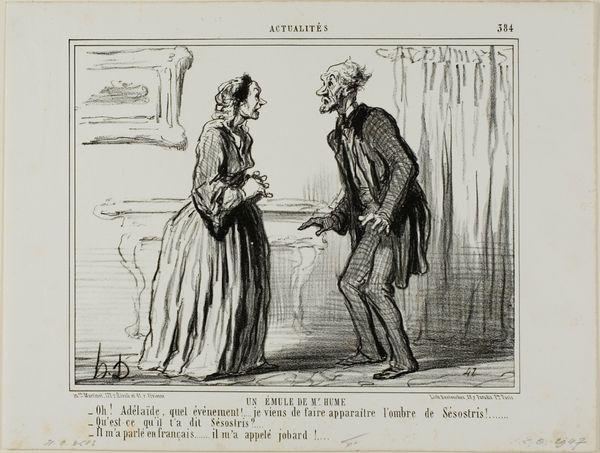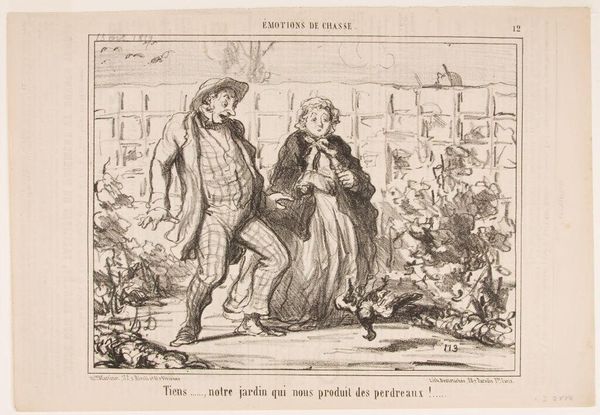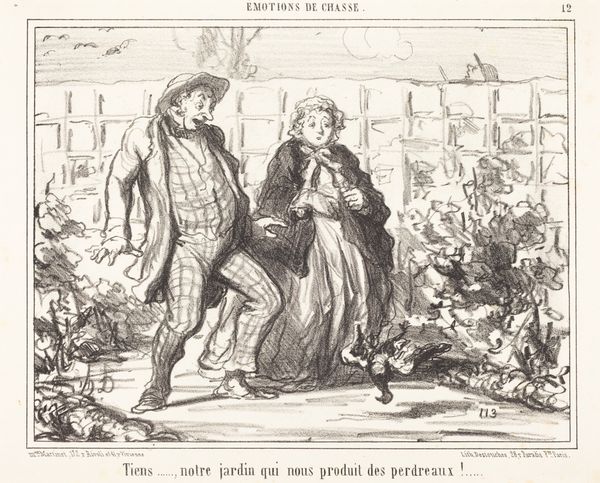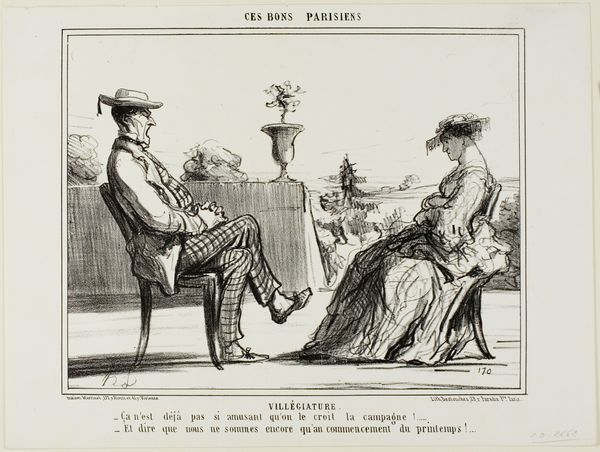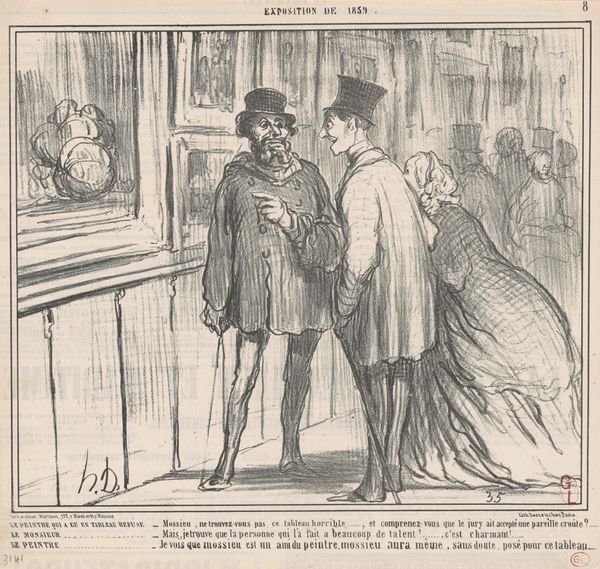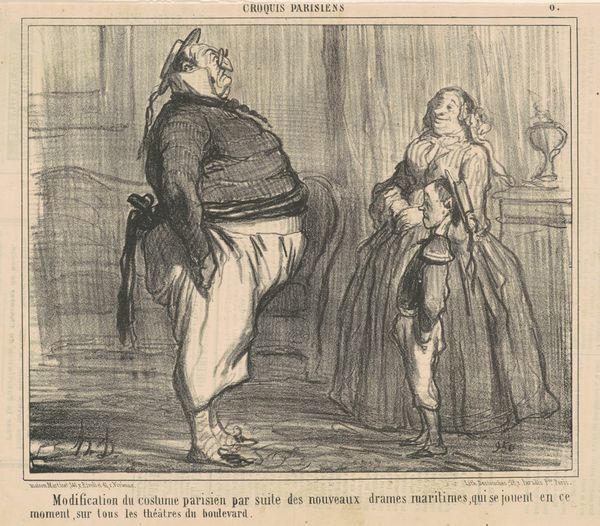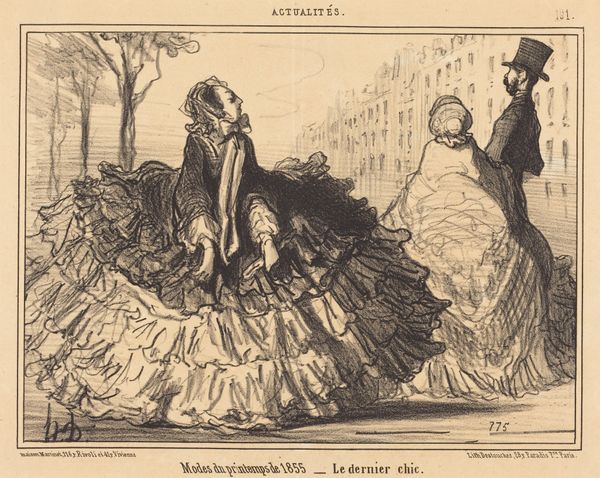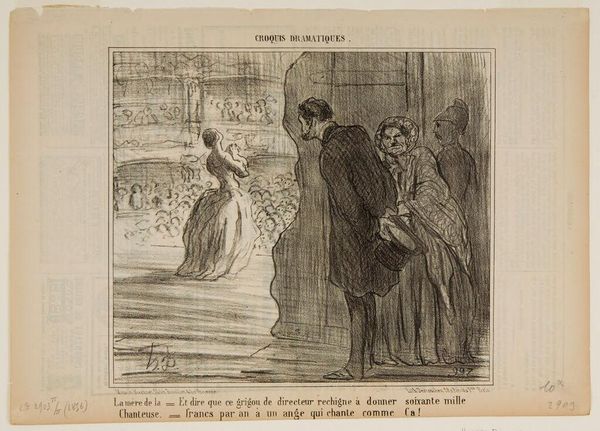
lithograph, print
#
lithograph
# print
#
caricature
#
genre-painting
Copyright: National Gallery of Art: CC0 1.0
Curator: Honore Daumier's lithograph, "Oui madame ... ces animaux-la ...", circa 19th century. The very material of this print – lithography, a process reliant on the chemical reaction of oil and water – inherently connects the artwork to mass production and consumption. Editor: I see a formally dressed couple observing some goats. The man is gesturing theatrically. I’m struck by the caricature-like nature of it, it feels humorous but I don’t understand what’s funny. What do you see in this print that I’m missing? Curator: For me, it highlights the social context of 19th-century France. Daumier's work is rife with class critique. The Societe d’Acclimatation itself reflects a specific ideology— the control and manipulation of the natural world by the bourgeoisie. These "acclimated" animals, removed from their natural environments, symbolize a kind of social engineering. Note the artist's line, creating a contrast in clothing materiality. Editor: So, it’s not just about funny looking people, but about their relationship to labor and societal structure, even down to the material they're wearing and the way those material goods came into being? Curator: Exactly. Daumier uses lithography— a relatively inexpensive method – to distribute this critique widely. Consider the labor involved in producing the lithographic stone, the ink, the paper… these factors underpin the image’s very existence and speak to accessibility and dissemination of potentially subversive ideas to a wider audience. How would the work resonate if created as a large, unique oil on canvas for only the wealthy to see? Editor: I see. The material itself shapes the meaning and impact. Now I notice the slight griminess of the lithograph adds to its down-to-earth quality, reflecting its potential circulation. Curator: Precisely! This piece really invites reflection on our relationship with both natural resources, and economic disparities reflected through everyday labor, doesn’t it? Editor: Definitely gives you a lot to consider!
Comments
No comments
Be the first to comment and join the conversation on the ultimate creative platform.

